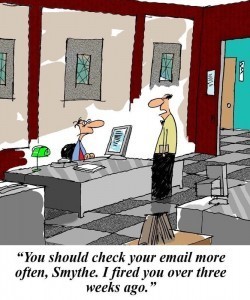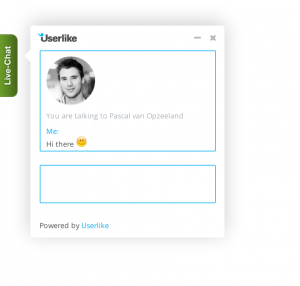Shep Hyken's Blog, page 216
January 9, 2015
Guest Blog: Take a Turn for Better Customer Service
This week on our Friends on Friday guest blog post, my colleague Russel Lolacher shares effective strategies for pleasing the customer. I like his T.U.R.N. acronym for providing a better customer service experience. – Shep Hyken
E.L.A.A. = Everybody loves an acronym.
When it comes to providing a better customer service experience, try a T.U.R.N.
Recently I was thinking about my various conversations around customer service. Whether it’s individual experiences or companies themselves, I’ve noticed that it can be a very complicated process, sometimes revamping a whole philosophy or trying to be all things to all people.
It can include…
Building lasting relationships.
Listening to concerns.
Addressing issues.
Helping where we can.
Being available.
Being human.
Guiding repeat purchases.
Providing a positive experience.
Linking directly to business goals.
Yeah, you really could go on and on. And believe me, all these have sub-headings and partitions as well. But simple and straight forward can work, or at least be a great place to build from. Whether in government, business or non-profit, it doesn’t matter…it’s about that customer, and that customer’s feeling about their experience with your business.
T.U.R.N. to the customer. It’s a straight forward way of thinking.
Be Timely, Useful, Relevant and Nearby. Hey, we do love our acronyms…
Be Timely – Your customers want a reply, information or even someone to talk to as soon as possible. Regardless of how busy you may be, response time is critical in showing you care about what they want and what they have to say or share. Do you have to have an answer right away? No. But timely also includes just acknowledging the issue or question. There’s an enormous amount of value in a customer feeling listened to.
Be Useful – Is your advice/product/service/content applicable to the customer’s situation or resolve a problem? Are you able to help your customer, providing advice and direction Or are you just trying to make that sale? Being useful is one of the most effective ways to build trust and long-term relationships with customers. You were the one that helped them. And they know they can rely on you when they come back again, seeing you as a trusted resource and some one they could recommend to others.
Be Relevant – The information you share or the insight you provide when engaging with a customer has to matter to them. Understanding your consumers and the situations that would bring them into contact with you will only better help you to solve their problem. Or, at the very least help you to provide a better customer experience.
Be Nearby (OK “accessible” is better, but “nearby” works for the acronym) – Social media and Google are where your customers, past, present and future, are looking for answers their questions or solutions to their problems. Are you there? On social, you need to engage where your customers want to be engaged. Online, make sure your information is as easy to find as possible, and that your contact information is readily available. Don’t hide. Your customers hate that. Or they’ll find your competition.
You can certainly go down the rabbit hole, trying to think of all the ways to please your customers, but the really effective, straight forward strategy is the customer-centric one that works for them.
And all the best ones are simple:
Stan Phelps‘s The Goldfish Rule - “give customers unexpected extras.”
Marsha Collier‘s “fish where the fish are.” (From her Virtual Hold interview)
Ted Coine‘s Leadership + Culture + Service = Profits (Switch and Shift Blog)
Shep Hyken’s To Serve and Protect Strategy “It’s our job to serve and protect our customers from making bad decisions.”
What’s your simple service strategy? Remember, acronyms are cool.
And, remember to take that T.U.R.N….
Russel Lolacher is the Director of Web and Social Media for the BC Ministry of Transportation and Infrastructure, a professional speaker for large conferences and post-secondary institutions, a communications and PR consultant for small to national organizations and is internationally recognized as an influential customer service expert through his blog The Upsell by the Huffington Post, CallCentre UK and GetApp.com.
For more articles from Shep Hyken and his guest contributors go to customerserviceblog.com
The post Guest Blog: Take a Turn for Better Customer Service appeared first on Shep Hyken.
January 7, 2015
She Lied to Me: A Great Customer Service Experience Turns Ugly
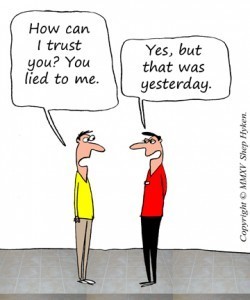 Company Policies
Company PoliciesThere’s no lying in customer service!
Here is a short version of the story. On a recent trip I met a number of my fellow professional speakers for dinner at the hotel we were staying at. Sometime during the dinner someone asked if all of us brought down the five dollar discount coupons that were in our registration packet. Two of us, myself included, had not. When it came time to pay our bill we asked the server if we could pay the bill, get the discount, and we promised to bring the coupons back once we all got up from the table. I jokingly said I would provide collateral, if necessary. She laughed and said it wasn’t necessary.
Several minutes later one of the restaurant managers came over and said that unfortunately she needed the coupons when we paid. She said there was a code she had to enter for us to receive the discount. It was only five dollars, so I thought to let it go. I didn’t want to leave my friends for the ten minutes it would take to go back to my room and come back down. No big deal.
Well, it was “no big deal” until I noticed that the coupons didn’t have a code on them. They were just pieces of paper that had the name of the restaurant with the five dollar offer for hotel guests. The manager had lied.
When the server came back, I asked to speak to the manager and I told her why. Our server was shocked and obviously very uncomfortable. I assured her that she was awesome and I’d recommend her for a promotion. She laughed and went to get the manager.
A short time later a different manager came back. She listened to my story and was also shocked. She apologized profusely and insisted on taking care of us and buying us a drink. She was truly upset.
The issue wasn’t about the five dollars. It wasn’t about the coupon. It was about a lie. The manager lied to me. No matter how perfect everything was up until that point, the experience ended in a crash.
Sometimes a company may have a policy or procedure I don’t agree with. I can live with that. But, don’t lie about it. A lie is a lie, and that is unacceptable for anyone or any company. It instantly destroys confidence and trust. One person’s lie can reflect on all of the employees. Customers will walk away and say, “I don’t want to do business with them. They lie to their customers.” It wasn’t that they lied. It was a he or a she that lied. It was just one person, and maybe that’s the only person in the entire company that ever lied. But at that moment, that one person represented all of the other employees.
Back to what I stated at the beginning: There’s no lying in customer service!
Happy New Year! In case you missed last week’s blog, I shared 15 customer service tips for the new year. Click here to read them and may your year be…Amazing!
Shep Hyken is a customer service expert, professional speaker and New York Times bestselling business author. For information contact (314)692-2200 or www.hyken.com . For information on The Customer Focus™ customer service training programs go to http://www.thecustomerfocus.com . Follow on Twitter: @Hyken
(Copyright © MMXV, Shep Hyken)
The post She Lied to Me: A Great Customer Service Experience Turns Ugly appeared first on Shep Hyken.
January 5, 2015
5 Top Customer Service Articles For the Week of January 5, 2015
Each week I read a number of customer service articles from various online resources. Here are my top five picks from last week. I have added my comment about each article and would like to hear what you think too.
Big Idea 2015: Companies Should Fire Bad Customers by Fred Reichheld
(Time) Fred Reichheld is a Bain Fellow and founder of Bain & Company’s Loyalty Practice, which helps companies achieve results through customer and employee loyalty. He is the creator of Net Promoter System℠.
My Comment: If a customer can choose not to do business with a company, why shouldn’t a company be able to choose not to do business with a customer. The concept of “firing a customer” isn’t new, but I like the way that Fred Reicheld frames it up in this article.
5 Ways to Strengthen Customer Loyalty by Lilian Sue
(In Retrospect) Here are 5 unique ways you can increase customer loyalty to your brand, both online and offline.
My Comment: All the stats and facts say that it’s less expensive to keep a customer than to acquire a new one. This article has five great ideas on how to create customer loyalty. I’m sure any company can use at least one of them, if not all five to help build long-term relationships with their customers.
ROI of Customer Experience by Bruce Temkin
(LinkedIn) Our analysis shows a strong correlation between customer experience (CX) and loyalty factors such as repurchasing, trying new offerings, forgiving mistakes, and recommending the company to friends and colleagues.
My Comment: If you want proof of the return on your customer experience efforts, read this article that proves CX doesn’t cost. It pays. Bruce Temkin is one of the top researchers and consultants in this area, and this short article is proof that you should invest effort and dollars into the customer.
What customers really want – and how to delver it by Michele McGovern
(Customer Experience Insight) For everything you do to build relationships with customers, you’ll probably be surprised to see what they really want from you.
My Comment: If the product or service a company offers doesn’t do what it’s supposed to do, then it doesn’t matter how nice or easy it is to do business with you. Yes, the customer service and the relationship is a key to repeat business, but it must also include efficiency and ease of business.
Does Your Customer Service Bring People to Tears Like the Boston Red Sox? by Stan Phelps
(Forbes) Over the last year I’ve written about a select number of companies that have done heroic things to honor their customers. Not because of marketing, but because these things were the right things to do.
My Comment: These are great stories. Customer satisfaction is a rating. Customer loyalty is an emotion. Have a good product, and even provide good service, then add some type of emotional connection, and you may have a customer for life. These stories are great examples of how companies and individuals connect with their customers on an emotional level.
Shep Hyken is a customer service expert, professional speaker and New York Times bestselling business author. For information contact (314)692-2200 or www.hyken.com . For information on The Customer Focus™ customer service training programs go to www.thecustomerfocus.com . Follow on Twitter: @Hyken
The post 5 Top Customer Service Articles For the Week of January 5, 2015 appeared first on Shep Hyken.
January 2, 2015
Guest Blog: The Three Proven Customer Service Attributes that Drive Loyalty
This week on our Friends on Friday guest blog post, my colleague Adam Ramshaw shares information about what drives loyalty. This is information we can all use. – Shep Hyken
Providing really effective customer service doesn’t have to be difficult. Like most things in life it abides by the famous 80/20 rule: 80% of the value can be delivered with 20% of the work.
The problem is that most organisations don’t know which is the right 20% so they can’t deliver it effectively.
Over the past 10 years we have sent and analysed thousands of customer feedback surveys in a variety of industries.
Based on that extensive dataset here are three service attributes that consistently drive 80% (or more) of customer loyalty across a range of businesses.
1. Do What You Say You Will Do.
If you could only instil one service mantra in your staff this is it. Whether you call it “reliability” or “consistency” or simply “do what you say you will do”, this drives more customer loyalty than any other single service element.
The hardest part of delivering this attribute consistently is having staff understand that the key to reliability is setting the right customer expectations.
Most people want to deliver good service but, with the best of intentions, this can lead them over-promise.
“Of course we can deliver a rush order of that widget, in pink with purple spots by Friday!”
The trouble is that overpromising is the enemy of reliability.
Instead of being optimistic, as most customer service and sales staff are, teach your staff to be just slightly pessimistic in their promises.
When they miss an optimistic deadline they have to break the bad news to the customer and that hurts. It hurts the customer’s trust and the person’s ego.
Just beating a slightly pessimistic deadline drives much more customer loyalty. Give them the, slightly, bad news up front and then over deliver.
2. Responsiveness
Responsiveness can be a double edged sword because if you are very responsive it drives up customer loyalty but it also drives up customer expectations. The more responsive you are the more responsive you have to be.
However, the pain is worth it because the value is high; let me show you how high.
The chart below is research from the sales performance industry where outbound calls are made in response to a request by a prospect from a web form.
It shows the number of conversions versus the number of minutes since the customer request.
The seemingly insignificant change between responding in 10 minutes rather than 5, results in an 80% reduction in leads.
Source: The Lead Response Management Study, 2009
The immense impact that responsiveness has on sales, and customer loyalty, is clear.
In practice, staff often don’t want to contact the customer until they have a resolution but this is the wrong approach. Their need is no to **solve** the customer problem in five minutes only to respond to the customer in five minutes.
The difference is important and needs to be clear to staff.
They don’t need to perform the customer service in five minutes but they do need to respond and say “I’ve heard you and here is what is happening”
3. Easy to Do Business With
In practice, your customers will trade off a host of other service attributes if you are easy to do business with. They will forgive a slightly less fancy showroom or better trained service technicians if working with you is easy.
So look for ways that you can make it easy for customers. Here is an example from our own business:
In our consulting business we are often told by customers that our proposals are easy to understand. One of the simplest things we do to make it easy for customers is to provide clear instructions on how to proceed with the proposal.
To accept this proposal
1. Tick applicable Option(s)
2. Sign this page
3. Fax/scan and email entire “Investment” section of proposal to 555 555 555
It sounds simple (and it is) but how often have you gotten to the end of a *War and Peace* proposal, decided to proceed but been none the wiser on just how to do that.
You can see that it’s little things that make the difference her. So, look for ways in your business to make things easier for customers.
Adam Ramshaw owns a boutique customer feedback consulting company. With more than 15 years working in small business he knows the challenges it brings. RunOurSurvey is his answer to some of those challenges where you can download free Small Business Customer Feedback Resources to use in your business.
For more articles from Shep Hyken and his guest contributors go to customerserviceblog.com
The post Guest Blog: The Three Proven Customer Service Attributes that Drive Loyalty appeared first on Shep Hyken.
December 31, 2014
15 Customer Service Tips for 2015
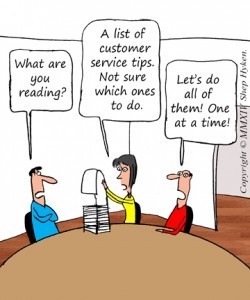 Happy New Year
Happy New YearIt’s a new year. As we kick off 2015, I thought I would share some of my favorite customer service tips. So, here are 15 customer service tips for 2015.
Get back to the basics of customer service. Be polite and say please and thank you.
Speaking of basics, use the customer’s name. It helps with building rapport.
Always do what you say you are going to do. If you say you’ll call back in five minutes, don’t make it ten.
Everyone has customers. Sometimes they are external – customers who pay you money. Sometimes they are internal – colleagues you work with. Sometimes they are both. Everyone has customers.
Let your customers know your name and how to contact you so if they are inadvertently disconnected, have another question, or there is any other reason they might need a “friend” at the company, they can easily get back in touch with you.
Respond quickly. Return calls, emails, and any other types of requests quickly.
Be punctual for meetings. It’s expected you will be on time. It’s a sign of disrespect if you aren’t.
Monitor social channels for comments from your customers and, once again, respond quickly.
Treat employees the way you want your customers treated, if not even better. What’s happening inside an organization is felt on the outside by the customer.
Some companies’ customer service people focus on one-call resolution. Try a no-transfer resolution.
Create a consistent experience. Everyone does their best every day. Customers want and expect a consistent, positive attitude from everyone they come into contact with.
Empower people to make great customer-focused decisions. This comes through hiring the right people and training them properly.
Constantly train customer service. It may be short five or ten minute tips. It needs to be ongoing. Training isn’t something you did. It’s something you do.
Everyone always has two jobs: to do the job they were hired to do and to take care of the customer.
Be a customer service role model. Regardless of what you do for your company, be that person that everyone admires and wants to emulate.
Don’t just read this list. Use this list! Choose the tips that resonate with you. Circle them. Then focus on one at a time; one each week. And, be sure to share this list with your colleagues. Maybe even your customers.
Here is to 2015 being your best customer year ever! Happy New Year!
Shep Hyken is a customer service expert, professional speaker and New York Times bestselling business author. For information contact (314)692-2200 or www.hyken.com . For information on The Customer Focus™ customer service training programs go to http://www.thecustomerfocus.com . Follow on Twitter: @Hyken
The post 15 Customer Service Tips for 2015 appeared first on Shep Hyken.
December 29, 2014
5 Top Customer Service Articles For the Week of December 29, 2014
Each week I read a number of customer service articles from various online resources. Here are my top five picks from last week. I have added my comment about each article and would like to hear what you think too.
Five Trends Shaping The Future Of Customer Service In 2015 by Blake Morgan
(Forbes) So as you toast to the New Year I encourage you to think about how these five customer service trends will affect your customer service offering in 2015.
My Comment: While there may be more than just five trends shaping the future of customer service in the upcoming year, these five are a great place to start you and your organization thinking about how to become more customer-focused. Great information!
3 Inspired Ways to Increase Customer Value by Jeannie Walters
(360 Connext) For leaders to make smart decisions about who the best, most loyal and most profitable customers are, they need to understand the makeup of the customer population. This often means creating special loyalty programs, elite experiences, and special perks to maintain the top 1% of customers.
My Comment: While all three of the tactics in this article are important, the biggest take away is a reminder for us to understand who our customer is. Also love the Omni Hotel example. I remember signing up for their loyalty program a few years back and how pleasantly surprised I was at the “instant perks,” just for signing up.
Loyalty Schemes: do they really work? by Ian Golding
(ijgolding) For a while now I have pondered over the genuine success of loyalty schemes. Do they really work? Is providing the consumer with a credit card style piece of plastic really a valid way of maintaining a relationship between company and customer?
My Comment: Yes, there are loyalty programs that seem to be schemes – more marketing programs than actual loyalty programs. Just because you issue a card to a customer, doesn’t make them loyal. However it works both ways. If they have accepted your invitation to carry your card, give them a reason to keep carrying it.
7 Troubling Myths About CX – and Why It Could Fail by Noreen Seebacher
(CMSWire) Colin Shaw knows customer experience (CX) — and he doesn’t like where it’s headed.
My Comment: Colin Shaw is a smart guy who understands Customer Experience. He makes a good case for these areas of concern. Reading these seven “myths,” as he calls them, makes me wonder how many companies might fall into one of these traps if they are not careful.
The Internal Customer – Service by Debra Gibson-Welch
(LinkedIn) Excellent Customer Service (internal and external) is a necessity for a business to thrive, be successful and ultimately survive.
My Comment: I believe that for a company to be truly customer-focused, they first must be employee-focused. What’s happening on the inside of the company is felt on the outside by the customer. There are some basic, common sense tips in this article that can go a long way in increasing morale inside a company.
Shep Hyken is a customer service expert, professional speaker and New York Times bestselling business author. For information contact (314)692-2200 or www.hyken.com . For information on The Customer Focus™ customer service training programs go to www.thecustomerfocus.com . Follow on Twitter: @Hyken
The post 5 Top Customer Service Articles For the Week of December 29, 2014 appeared first on Shep Hyken.
December 26, 2014
Guest Blog: Don’t be a robot, how to bring back the human side of customer service
This week on our Friends on Friday guest blog post, my colleague Alice Default writes about how to respond to customers on live chat and using chat to build customer relationships. I agree that it is important to use this opportunity to build relationships. – Shep Hyken
Recently, more and more people have been asking me if I’m a robot as I reply to chat messages. Just so you know, I’m not.
What stuns me the most though is that in most cases, when I reply that I am in fact an actual human being, people won’t believe me. And I need to prove to them that I am in fact an actual human being.
If customers think we’re robots, it might just be because we’re acting like ones
These experiences push me to wonder what kind of customer service world we’ve entered. Customers are so used to having to deal with robots that they don’t even consider talking to a real human being like a possibility anymore.
Sure, customer service automation has a lot of good sides, especially because it makes us save time and money. But in a lot of cases, this is happening to the detriment of any type of human connection between your company and your customers.
Maybe it’s time we start working on building meaningful relationships with our customers, between humans. Here’s how we could make this work.
1. Be more authentic
Customers are becoming increasingly vigilant about being marketed and advertised at in all the messages they receive. This means that they will filter out anything that they consider like untrustworthy: branded content, advertising, fake personalized customer support…
To avoid this, the only solution is to be as authentic as you can possibly be. Your customers should feel like even though messages are probably sent out to them through automated mechanisms, there is an actual human being behind it all they can reach out to if they need.
Start by keeping it simple and treat each and every one of your customers as an individual, not a ticket number, with his best interest at heart, not yours.
2. Engage the conversation
If customers think we’re robots, it might also be because more often than not, we act like ones, focusing on “closing” conversations in the quickest and most efficient manner. But customer requests shouldn’t be something that we want to go through as quickly as possible. Instead, we should consider each and every one of them as the beginning of possible conversations.
Sure you want to solve your customers’ issuers. But you don’t have to stop there. Why not take this contact opportunity to go further in the discussion? Ask them how their projects are going, if they need help on anything else or if they want to contribute to your next product development brainstorm.
By being straightforward and engaging in simple conversations, you might realize that the relationship you’re building with your customers goes way beyond this small bug you helped them fix yesterday.
3. Listen then listen better
Thankfully, there are things robots still can’t do. And this is what you need to focus on doing really really well if you want to build a meaningful relationship with your customers. Listening is one of these things.
You and only you, as a customer service representative and human being, have the ability to listen to your customers’ issues and adapt your responses to their specific needs, personalizing the solution and identifying the best options to go through.
By listening better to your customers, not only will they get a better solution for their issues but you will also be able to gain something out of all the efforts you’re putting in creating a very personalized experience for all of your customers.
Wrapping up
It turns out the battle against automated customer service shouldn’t be that hard after all. Robots still don’t know how to engage in meaningful conversations or listen to their customers’ needs (at least not yet). If being human is all it takes, we’re on the right path for success. Now all it takes is to prove it!
Alice Default is the Head of Growth and Marketing at Front, helping other companies take good care of their customers. She fell in love with customer service at an early stage and has since then been convinced that providing great customer care should be a priority for all companies. Follow her on Twitter @alice_default.
For more articles from Shep Hyken and his guest contributors go to customerserviceblog.com
The post Guest Blog: Don’t be a robot, how to bring back the human side of customer service appeared first on Shep Hyken.
December 24, 2014
Don’t Avoid Customer Complaints. Manage Them.
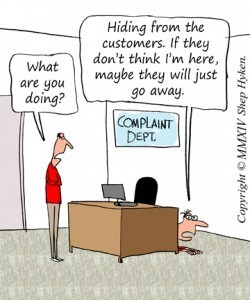 Complaint Avoidance
Complaint AvoidanceIt is typical that most companies want to create a customer service experience that doesn’t give their customers anything to complain about. Well, it’s not a matter of if the customer will ever have a complaint. It’s when the customer will complain.
Furthermore, the concept of complaint avoidance isn’t about trying to be perfect and never having a customer complaint. For the purpose of this lesson, it’s about avoiding reality. In other words, it’s about turning your head from mistakes, problems and complaints – acting as if they aren’t there.
Let’s discuss two types of complaint avoidance.
The first is the potential complaint. This is a complaint that hasn’t yet happened. It’s there, just waiting to be discovered. You know about it, but choose to look the other way away and, for whatever the reason, you don’t deal with it. It could be due to fear, laziness or apathy. It doesn’t matter what the reason is. Avoiding the problem doesn’t make it go away. Instead, you must seize this as an opportunity to step up and fix the problem before it becomes a complaint. You may have noticed a glitch or problem in your system. It may be an error on a report. It may be that you found out that your customer’s shipment won’t arrive on the date promised. Regardless of whatever the problem may be, rather than avoid it, manage it. Determine the issue, how it happened and what you can do to fix it. Communication becomes important. Be proactive. If there is a customer that needs to be informed, then inform them before they inform you. And by the way, that includes your internal customers as well. They depend on your good work, just as the customer does.
The second is simply avoiding the customer’s complaints. Dodging phone calls or not responding to emails and hoping that the customer will just stop complaining and go away. Not dealing with the complaint may escalate it the situation to become worse than it is. And, in some cases, the customer may actually stop complaining. They may even go away… permanently. I’m not a psychologist, but I believe this is considered passive-aggressive behavior; aggressively deciding to passively avoid the issue.
In either situation, the reality is that there is a problem. It has either the potential to become a complaint or already is a complaint. Either way, it must be dealt with. So, here are a three simple thoughts about managing versus avoiding customer complaints:
Be proactive. Deal with a potential problem or complaint it as quickly as possible.
It may or may not be your fault. Either way, you must demonstrate an attitude of accountability, so choose to own it.
Don’t just fix the problem. In the process, work to restore confidence. Prove that the customer made the right decision to do business with you.
Shep Hyken is a customer service expert, professional speaker and New York Times bestselling business author. For information contact (314)692-2200 or www.hyken.com . For information on The Customer Focus™ customer service training programs go to http://www.thecustomerfocus.com . Follow on Twitter: @Hyken
The post Don’t Avoid Customer Complaints. Manage Them. appeared first on Shep Hyken.
December 22, 2014
5 Top Customer Service Articles For the Week of December 22, 2014
Each week I read a number of customer service articles from various online resources. Here are my top five picks from last week. I have added my comment about each article and would like to hear what you think too.
Championship Hiring by Jim Canterucci
(Jim Canterucci) Whatever the process for hiring you can certainly control how the interview process goes. The candidate may need to meet with HR first, but the interview process where the decision is made should be controlled by you.
My Comment: It’s simple – You can’t have the right culture without the right people, and it starts with hiring. This is especially true for a customer-focused culture. This article shares some good, common sense hiring techniques. And, be sure to take the time to watch the five minute video.
____________________________________________________________
Implementing Customer Experience as an Organizational Value by Pete Kinser
(UX Magazine) Bringing customer-centered thinking into an organization is about more than just proclaiming that you’re focused on customer experience.
My Comment: Some say that customer service is a promise. Others say it’s a brand. This article positions it as an organizational value. Makes great sense, and I appreciate the eight steps that make the concept actionable.
____________________________________________________________
5 Surprising Studies on What People Consider “Good” Customer Service by Len Markidan
(HubSpot) There are quite a few counterintuitive truths that can make or break how your customers feel about your service. Below are five surprising data points on what people really expect out of “good” customer service.
My Comment: The five studies summarized in this article may make you rethink, or at least tweak your company’s customer service strategy. My favorite is speedy service versus empathetic service. I’ve always preached that speed doesn’t mean that you push a client (or customer) quickly through the process. Instead you push the customer quickly to the process. In other words, shorter wait times, quicker lines and faster response time.
____________________________________________________________
The Definitive Guide To Maximizing Your Survey Response Rate by Adam Ramshaw
(Run Our Survey) To max out your customer satisfaction survey response rate is not difficult but you do need to focus on the detail. With just a few small changes you can more than double the number of survey responses so its’ worth sweating the details.
My Comment: If you survey your customers – or are thinking of surveying your customers – then this is must-read information. Outstanding article on best practices for improving response rate and more!
_________________________________________________________________
10 Customer Influencers to Learn From Today by Mike Schoultz
(Digital Spark Marketing) A differentiated customer influencer is critical for business success. Companies that consistently provide the best ones are most often the most successful.
My Comment: I like this list! Why would a customer buy from you instead of the competition? This list of ten “customer influencers” are what can help drive repeat business, word-of-mouth marketing and ultimately customer loyalty. I might add accountability and predictability to the list to make it an even dozen.
Shep Hyken is a customer service expert, professional speaker and New York Times bestselling business author. For information contact (314)692-2200 or www.hyken.com . For information on The Customer Focus™ customer service training programs go to www.thecustomerfocus.com . Follow on Twitter: @Hyken
The post 5 Top Customer Service Articles For the Week of December 22, 2014 appeared first on Shep Hyken.
December 19, 2014
Guest Blog: The Right Language Per Channel
This week on our Friends on Friday guest blog post, my colleague Marta Wadsworth writes about the channels companies use to communicate with their customers. The key is responding to the customer quickly. – Shep Hyken
I’m not much of a phone person. I prefer to handle inquiries over email or chat where I have the time to put my thoughts together exactly as I want them, where as on the phone I always feel a bit clumsy. We all have our preferred channels, but being a business professional in the 21st century requires you to have the basic skills that allow you to communicate over each of these channels. Here is a guide for you and your colleagues to master the 3 Channels of Business Communication:
Phone Support
Phone support is one of the channels customers look for when want to see their problems solved quickly, through a personal interaction with a skilled agent. However, according to a Talkdesk infographic report, 43% of customers claim that call-center support is usually provided with low-quality.
1. Practice Active Listening
When supporting a customer over the phone it is easy to misunderstand problems or questions, due to the fact that it’s real time. If you wander off with your thoughts, you cannot read back. So make sure you actively listen to what the other is saying and avoid unnecessary interruptions. Give the other person the necessary time to explain their issue before shooting with the solution.
2. Keep it simple
In the same way, oftentimes customers experience a hard time understanding the service employee. Providing clear support over the phone is much harder than doing so over e-mail or live chat, because the customer cannot read back what you said. To avoid frustration, make sure you ask your questions plain and clearly. Avoid long complicated sentences.
3. Don’t assume anything
Different people have different levels of knowledge about your product and different technological skills. Assuming that the person you are talking to is on the same level as you can lead to big misunderstandings. Make sure the other side is on the same page, understands your explanation and can follow your instructions.
4. Be prepared for emotional responses.
When talking to someone over the phone you have to be prepared for the possibility that things might get out of your control. In direct communications people can get emotional more easily. Handling your emotions, remaining calm and in a patient state of mind is very important to convey professionalism and to be able to offer meaningful solutions and help the customer to change his attitude regarding you and your company.
Over e-mail
From the business side, e-mail interactions are the most efficient way of delivering support. It gives you some time to understand and reply to the customer and inquiries can be queued.
1. Add a short pleasantry
This is natural in phone and live chat, but is often forgotten for email. Whenever you’re sending an email, it’s good practice to add an introductory pleasantry after greeting the person. This can be a short sentence such as “I hope you are well” or something more personal: “I hope you managed to get that Johnson account!”. The power of a short pleasantry cannot be underestimated, as it sets a friendly tone to the conversation.
2. Prioritize Information
Unlike phone support, over e-mail you cannot address instantaneously customer problems. When you are returning an e-mail make sure you start by addressing the most urgent issues first. Following, enumerate the other issues as well as presenting your solutions.
3. Reply within an acceptable timeframe
The big pain of email support is that customers are not certain when they will get a response.
Try to reply to inquiries within 24 hours. Use automated answers for common questions or hire an extra support employee. Some companies implement an automated response email notifying you that the inquiry was received. The immediate feedback takes away some of the uncertainty of not receiving an answer.
Over the Live Chat
Live chat is becoming more and more popular among website owners who wish to provide instant support to their website visitors. This channel is used both as a service channel as well as a means for offering sales support.
1. Respond Promptly
Unlike e-mails that give you a certain acceptable span to reply, live chat is designed to be an instantaneous response channel. If someone reaches you over the chat, they don’t expect to have to wait more than 1 minute for a response.
Make sure you don’t leave the chat unattended while you go out for a coffee. Either put yourself on ‘Away’ or take the chat with you by connecting to a mobile client.
2. Show you are listening
There are several ways which you can use to show that you are paying attention to what the customer is telling you. Most commonly you can use listening indicators. In fact they are nothing more than ways to simulate real-life sounds such as “Aha” or a “I see…”. They show your web visitors that you there and listening.
3. Focus on keeping it conversational
Unlike e-mail conversations, when you use the live chat you are engaging in a real-time conversation with your customer. Don’t make your sentences too long or too complicated. If you need to explain a long story, make sure you split it in smaller sentences, sent one by one.
Marta Wadsworth works for Userlike the leading live chat software solution in Cologne, Germany.
For more articles from Shep Hyken and his guest contributors go to customerserviceblog.com
The post Guest Blog: The Right Language Per Channel appeared first on Shep Hyken.





